

As the name suggests, Design, Bitches is a synergy of creativity and earthiness. Combining a refined sense of order with playful humor, the Los Angeles-based firm founded by Catherine Johnson and Rebecca Rudolph distills the splendor of urban chaos in their graphic branding, art projects, and commercial and residential interiors.
Although they now have two employees, Design, Bitches still inhabits an office in Rudolph’s backyard to keep overhead low while preserving their ability to select the projects they genuinely want to work on. While they have designed home interiors, a great deal of their design work has been for restaurants in the L.A. area. From The Oinkster to The Springs to Coolhaus Ice Cream, each interior is conceived with three goals in mind:
Coolhaus Ice Cream’s two unique locations – one in Culver City, the other in Pasadena – demonstrate how the firm adheres to a site-specific mentality, even with the same client. In this sense, the firm is as committed to notions of perfecting their designs as they are to embracing change – or at least, creating spaces that encounter change gracefully. The key to their success has been, perhaps counterintuitively, remaining small and choosy. This corresponding selectivity has allowed them to expand beyond a rigid portfolio into a flowering of more artistic projects, from their tongue-in-cheek “Masters of Architecture” photography series to the fabric performance piece “Double Hoodie.”
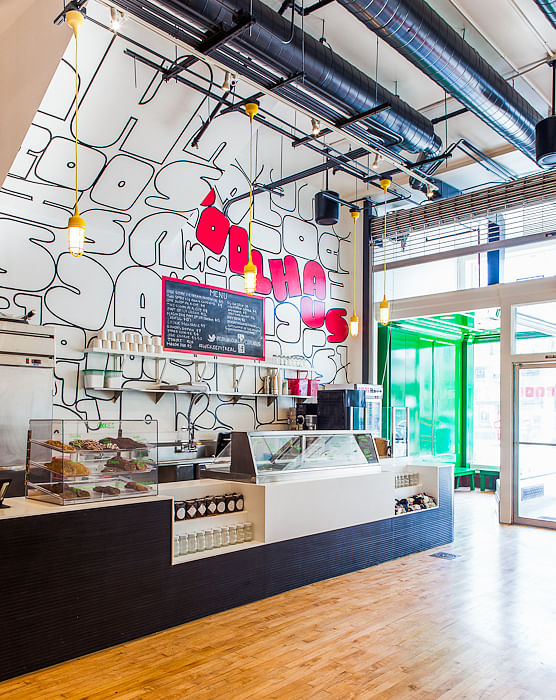
It’s therefore fitting that the firm was founded in Los Angeles, a city whose low-density landscape has historically served as a seedbed for the ephemeral and experimental. Both women studied at SCI-Arc, although Rudolph graduated five years before Johnson. The key to their success has been, perhaps counterintuitively, remaining small and choosyRudolph earned her master’s degree in philosophy from the University of Paris VIII before enrolling at SCI-Arc to study under Mike Davis, where she wrote her thesis about prison architecture and spatial control. After graduating, Rudolph worked for a variety of L.A.-based architects, including Michael Maltzan, before opening a design-build company with her husband. Johnson obtained her Bachelor of Interior Architecture from the University of Oregon before enrolling in SCI-Arc for a Master’s degree, where as a student she built physical models for Barbara Bestor. After graduating in 2005, she transitioned into a full-time position at Barbara Bestor’s studio, where over the course of seven years she became the studio’s design director. In 2010, Johnson left Bestor Architecture to join Rudolph in launching Design, Bitches.
I spoke via phone with Rudolph and Johnson about their love of “changeability,” their business strategy, and their designs on (and for) the future.
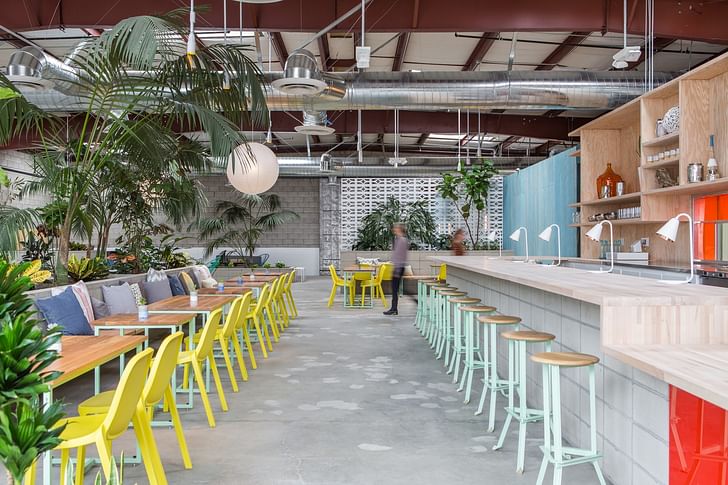
Q: A recent iteration of the “about us” section on your website incorporated the phrase “we believe architecture should be assembled by the user at times.” What does that mean, in practical terms?
Rudolph: That phrase comes from our deep interest in people and how they experience a space. In an ideal world there’s some flexibility and some degree of changeability so that the spaces become places when they’re activated by the life that’s happening within and around them. We build that idea into the design: that it’s really the users of the space that are creating what the architecture is. It’s not just the building or the space itself. It’s the situation, for lack of a better word.
Q: Let’s more closely examine what you mean by “some degree of changeability.” Within a design, how do you allow for user interference or adaptability in order to achieve a certain effect?
R: We try to have so many different possible experiences in the space. There’s a lot of thinking and looking at things in three dimensions in terms of, ‘How could someone experience this space?’ We try to make it open-ended, so that there’s a variety of ways that you might enter and exit the space. We try to include a variety of places that you might come back to and interact with people. We have some things that can move around, such as furniture pieces, but that can become challenging, especially because so many of the projects we’ve been doing lately are restaurants. There’s only so much practically that you can do to move things. It’s not so much that things are physically changing, it’s that there’s not one way that you have to experience the space.
Johnson: Also, we like to have a degree of changeability in terms of materiality. We like to allow materials, sometimes, to weather to a degree in order to reflect the use that’s happened. We like materials that can wear and show that wear in a beautiful way. I think I’ve always been opposed to when buildings and building owners put obstacles to inhibit skateboarders, for example, from riding a piece of marble in the plaza. To me, the grinding of that stone makes the place richer because it shows the history of activity and the life that’s happening within it. Otherwise it could be a dull, lifeless, empty, unusable space. In that sense, we kind of want to expand the definition of architecture. It could be a bit more versatile and accessible to a broader audience. That’s one of our main goals.

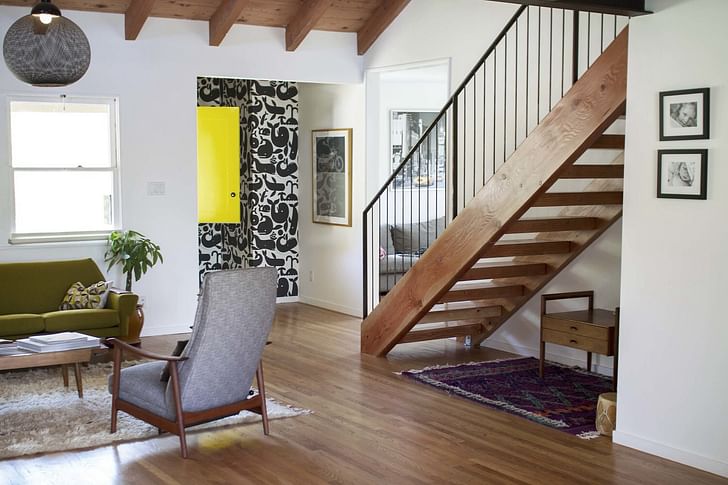
Q: What’s your process for designing for a restaurant versus a private home?
J: Ultimately, we always begin by mining the vernacular in any project, and then sort of seeing where we can amp up the volume. With restaurant clients in particular, there’s a brand and their food to consider. We need to create a cohesive voice between the environment, the graphics, the food, and the space. A multitude of people are coming in and out of the space, so it is a variable experience. I think there’s more opportunity for variable interpretation in a public space like a restaurant. To me, the grinding of that stone [by a skateboarder] makes the place richer because it shows the history of activity and the life that’s happening within it.In a private home, I feel like we approach it similarly, but we mine the place they’re living, and we mine how they live. We find out what kind of people are living there, so then we are able to create these sort of unique and weird and special moments for them within their homes. So that’s a little more specific and particular. Ultimately, we’re interested in creating these spaces in which people are incredibly comfortable. In terms of our restaurants we want to create spaces that people return to habitually. Not only is it good for our clients from a business perspective, but we like playing that role in the larger urban fabric where we’re creating spaces that become a part of people’s everyday lives. We like the idea that they might notice something different every time they come in. It’s the same thing in your house: you might sit in one little space for one particular reason, and the next day in another space for a different reason. Ultimately, you always have these places where you can go and you’re comfortable immediately throughout the space.
Q: Do you have any employees? What’s the size of your studio?
R: We have two full-time employees, so there’s four of us. We have consultants occasionally that we add on if we need to draw people in, depending on what we’re working on.
J: We started our practice similar to the modern start-up. We started in 2010 doing specific projects that we were interested in. We kind of floated nomadically around L.A., working in our cars or houses or cafes, or meeting in other interesting places. Keeping our core quite small allows us more flexibility and gives us more power of choice in directing our path ourselves, rather than being bogged down by the old model of large overhead and perhaps a quite fancy office. [Laughs.]
R: We currently work out of an office in the backyard of my house. But we’re probably going to move soon!
J: Yeah, we’re quickly growing out of it so we’ll have to move at some point. It has been crucial to us to stay lean and strong. It pushes us forward and allows us to do the projects we want to do.
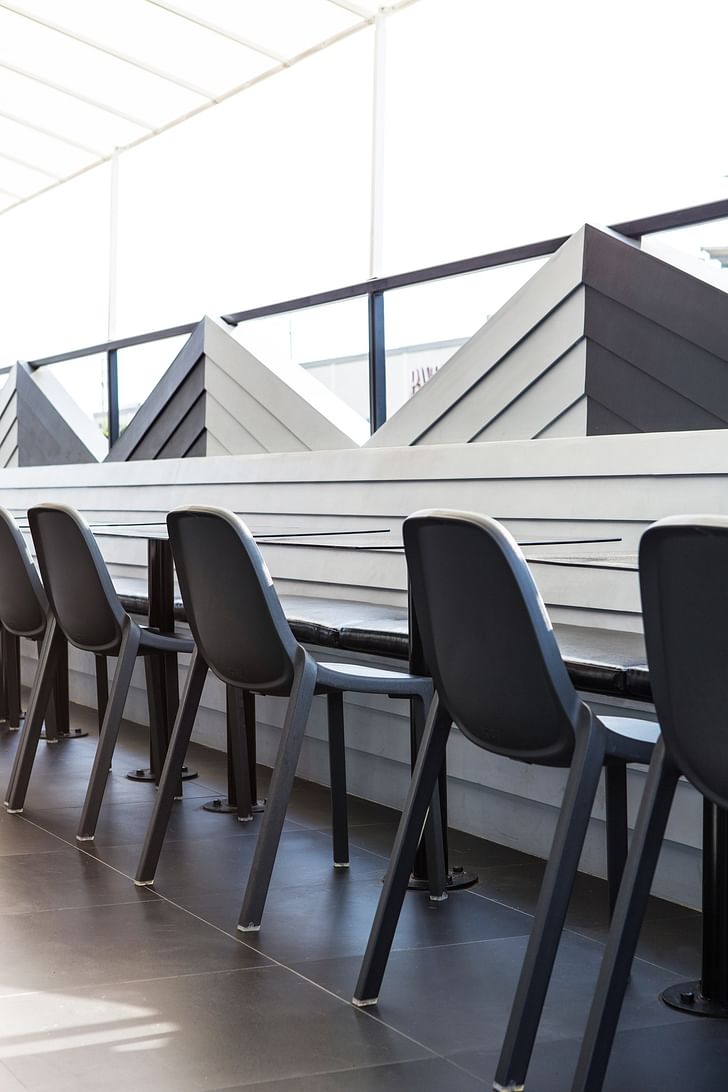
Q: What’s your experience of being an employer?
J: We have a variety of interns that have flowed in and out. Ultimately, it’s seasonal, so we have interns who are still in school and during the school year are more full time. Otherwise, the employees we have now we’ve been working with for one to two years. I think we’ve been really fortunate, whether it’s our name or our work, to attract people who want to work with us. I think they have contributed a great deal to our team. We love the idea of collaborating and mixing lots of ideas together. I think having extra voices enriches our work.
R: We definitely value the team that we’ve built up.
J: It’s important to us to try and create an atmosphere that fosters growth. When people are challenged, they want to stay because they’re working on interesting things.
Q: Of all your projects, was there one in particular which felt exceptionally easy? Conversely, was there a project that really challenged you to grow in terms of how you approach design?
R: The [Superba] Snackbar was the easiest.
J: The Snackbar went so fast that we just kind of had to go for it.
R: The Springs was complicated from a permitting perspective, but from a design perspective, the clients were great to work with, although the budget was very limited. I think we just had to be creative within a limited palette. The Springs did challenge the way we think. It increased our interest in projects that had interesting programs. How can you create different types of environments that people can inhabit in different ways and still feel like you’re not the only person in the room? On that scale, we got to challenge some of these ideas about space.
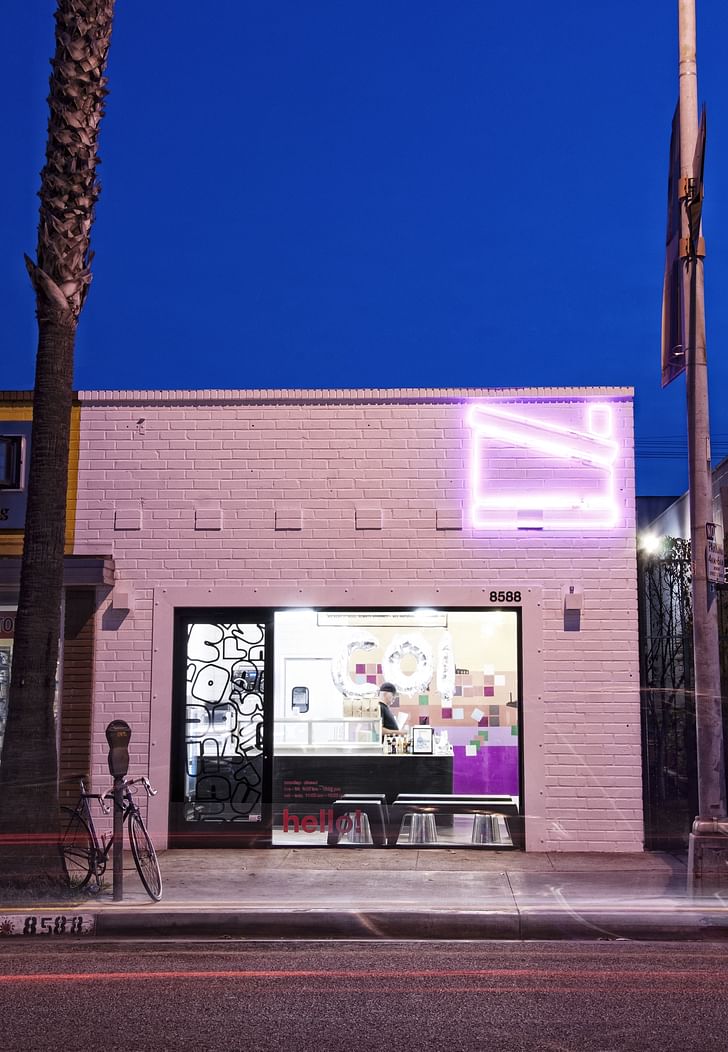
Q: And now, a hypothetical scenario: let’s say a famous restaurant chain approached you and wanted to work with you but they wanted to replicate the design for every single outlet. Would that be that antithesis of your ethos?
R: Interestingly, lots of chains have approached us and we haven’t turned anything down. We just haven’t found the right collaborative fit yet.
J: Yeah, I think our interest in is making this cohesive idea of brand, as well as brand identity and graphics design. Ultimately, the idea of helping an established chain reinvent itself is intriguing to us. I think working out the details of how that translates to a major or national roll-out would definitely be a shift in how we work, since we love to mine the vernacular of each place that we work. It’s fitting that the firm was founded in Los Angeles, a city whose low-density landscape has historically served as a seedbed for the ephemeral and experimentalOur ideal scenario would be a client who allows us to play with the parts, but would allow us to adapt their space so that they’re reflecting each particular place that they’re in.
R: We received some inquires from larger chains that also seemed to be realizing that that’s something the public is working for: a bit more variety. The restaurant chains are trying to figure out how to make themselves like less of a chain, or at least feel more regional at a minimum. It’s an interesting direction that the wants and needs of the public are pushing. I’m fascinated by the notion of public space.
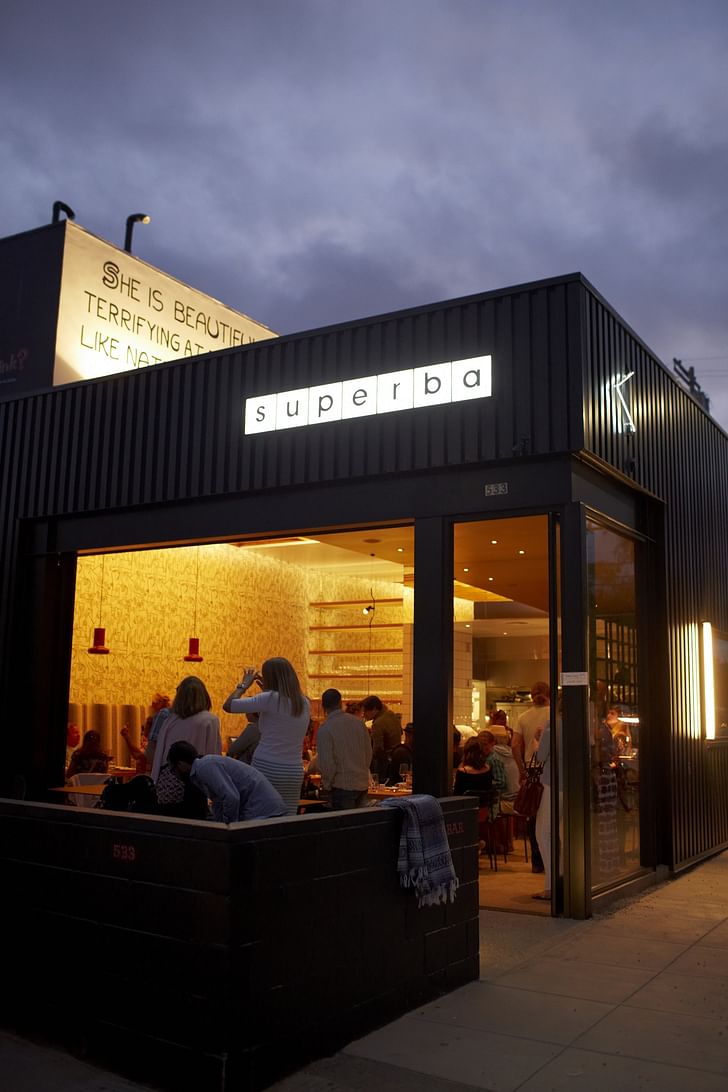
Q: How do you find new business?
J: Word of mouth, repeat clients, and like-minded entrepreneurial spirits. We’re fortunate in having our work in restaurants, which of course are these very public spaces where people are going and meeting each other. Conveniently for us, people are going to those spaces and then asking who designed them.
UpStarts is a series of features on the foundations of contemporary practice. It will have a global reach in which practices from Europe, North America, Asia, and beyond will be asked to address the work behind getting the work, and the effect of cultural contexts. The focus will be on how a practice is initiated and maintained. In many ways, the critical years of a fledgling design partnership is within the initial five years, after the haze and daze of getting it off the ground. UpStarts surveys the first years of practice as a tool for tracking the tactics of the rapidly evolving methods for sustaining a practice.
Julia Ingalls is primarily an essayist. Her work has appeared or is forthcoming in Slate, Salon, Dwell, Guernica, The LA Weekly, The Nervous Breakdown, Forth, Trop, and 89.9 KCRW. She's into it.
2 Comments
I really like these, bitches.
bitches, please. (null you had 15 days to make that comment, couldn't hold back)
Block this user
Are you sure you want to block this user and hide all related comments throughout the site?
Archinect
This is your first comment on Archinect. Your comment will be visible once approved.